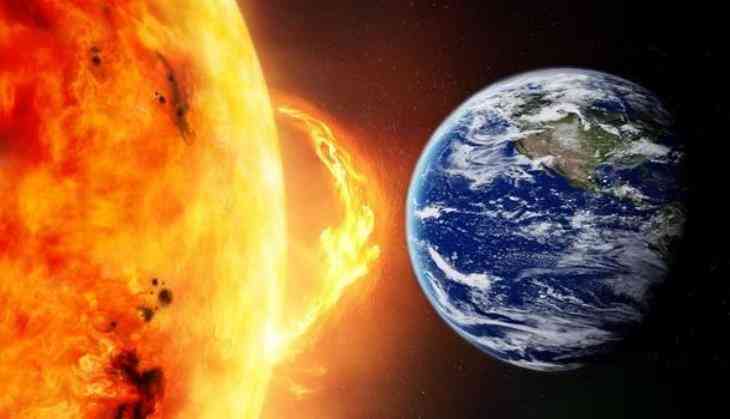
One more geomagnetic storm is making a headway for a "direct hit" with Earth within 48 hours and could cause power, GPS and radio blackouts.
National Aeronautics and Space Administration (NASA) and National Oceanic and Atmospheric Administration (NOAA) models anticipate a fast solar wind stream will help to push the cyclone before it makes impact with the planet's magnetic field on Thursday.
At that point it is likely to "intensify", according to an expert.
It is the second in a matter of days - and this is could mean disruption for satellites and cause power fluctuations, reports the Daily Express.
Space weather physicist Tamitha Skov took to her Twitter handle today and issued a warning.
She said: "Direct hit – solar storm prediction models from both NOAA and NASA show the storm hits April 14, just ahead of a fast solar wind stream.
"This should intensify the storm as the stream will give it a push from behind!"
She added: "Chances of reaching G2-level conditions are 80 percent at high latitudes and 20% at mid-latitudes.
"Radio blackout risk remains low, but amateur #radio operators and GPS users face disruptions on Earth's nightside."
When solar storms arrive at Earth's magnetic field blackouts could cause power outages if they directly hit transformers, as per report by the Daily Express.
According to NASA, the G2-class storm will arrive because of a coronal mass ejection (CME) - a major plasma release from the sun's outer layer.
Such solar storm takes place if enough energy from the solar wind is exchanged in a close proximity to Earth.
The storms are then categorised by US Space Weather Center (SWPC) on a scale of G1 Minor up to G5 Extreme.
It says when CMEs hit the planet's magnetosphere "all of that extra radiation can damage the satellites we use for communications and navigation, it can disrupt power grids that provide our electricity".
The approaching disturbance could result in auroras, similar to the Northern Lights.
The aurora borealis itself could be seeable from Sunday until Tuesday if skies are clear, says the Met Office.
Ms Skov went on to say: “Aurora field reporters, be sure to charge your camera batteries!”
Ms Skov continued: "The NASA solar storm prediction model shows the hit occurring a little later on April 14 at 12pm UTC time compared to the NOAA model, which shows the arrival a bit earlier at 7am UTC time!
"Either way, both indicate an excellent chance for aurora!”
The incoming #solarstorm could bring #aurora to mid-latitudes April 14-15. Chances of reaching G2-level conditions are 80% at high latitudes & 20% at mid-latitudes. Radio #blackout risk remains low, but amateur #radio operators & #GPS users face disruptions on Earth's nightside. pic.twitter.com/dPj3ia3MbF
— Dr. Tamitha Skov (@TamithaSkov) April 12, 2022
It comes after a G3 storm - classed as major - hit the atmosphere on Sunday, and was still being felt on Tuesday.
Experts have warned the Earth that it would struggle to contend with the effects of a G5 storm should it occur.
As per the SpaceWeather.com, the present solar winds are blowing at 516.6 km/sec with a density of 7.5 protons/cm3.
At the end of March, 17 solar flares emitting from a single spot on the sun result in another solar storm alert.
NASA observatories noticed the flares before announcing at least two of them were on direct collision course with the Earth.
Solar activity has been rising and falling naturally every 11 years, according to scientific observations.
Whilst the pattern is not quite like clockwork and astronomers are of the opinion that we are now entering a period of increased solar activity that could reach optimum in 2025.
In 2020, a new family of sunspots was discovered on the surface of our star.
This generated the biggest solar flare seen by astronomers since 2017.
Also Read: Ocean water samples provide treasure trove of RNA virus data: Study
First published: 13 April 2022, 14:45 IST

